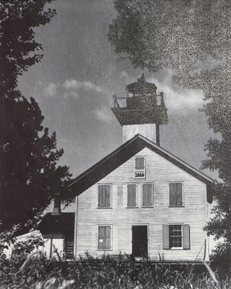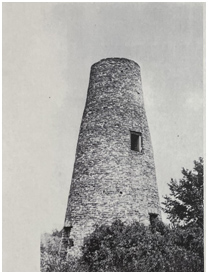
By Sam Haase
Contributing Writer
SUAMICO – The same year that Wisconsin was recognized as a state, Green Bay partnered with Congress to build its first lighthouse.
The first lighthouse proposed in the area was placed near the mouth of the Fox River but Pottawatomi Island, the proposed site, was deemed unsuitable for construction and uninhabitable for a keeper.
It was later decided that the best place for the lighthouse would be on Long Tail Point about two miles north of the original proposed placement.
Congress allocated $4,000 in 1847 for the construction of the lighthouse and it was built using the stone and sand that was located nearby.
The tower was 51.5 feet tall with nine lamps at the top in the lantern room.
A stone house was built nearby with five rooms for the keepers to live.
The first keeper to live and work on Long Tail Point was Peter White who activated the lighthouse for the first time in 1848.

By 1859 the water level had risen and surrounded the tower with water.
Afraid that the lighthouse would fall, another one was built high uphill that same year.
The second lighthouse was made out of wood instead of stone to ensure it was stable on the sandy soil that filled the area.
In June of 1890, the lighthouse was upgraded with a fog bell to signal ships even if the lamps could not be seen.
However, four years later it was decided that the bell was not of use to ships as it could not be heard in most weather conditions.
Because of this, the Lighthouse Board decided that the only solution would be to build a third lighthouse closer to the water.
In 1899 a wood and cement structure was placed directly into the water.
This lighthouse was outfitted with a fog bell during its construction which was updated in 1911 to a compressed air fog horn.
In 1936 that lighthouse was automated and no longer required a keeper.
This would prevent events such as the one that occurred in 1929 where the keeper at the time had to flee the lighthouse as it flooded during a storm.
The year 1973 saw the destruction of the third lighthouse.
A storm of 70 miles per hour winds caused waves up to 12 feet tall that tore apart the structure the lighthouse sat on as well as the building itself.
Both the 1859 and 1899 lighthouses were constructed because the people of Green Bay believed that the first lighthouse would be flooded and lost.
However, in an ironic twist of events, the original lighthouse built in 1847 is the only one that can still be seen today.
While the lighthouse is no longer in use, it can still be seen on Long Tail Point with a modern light located at the top to mark the tip of the point for those passing through.
